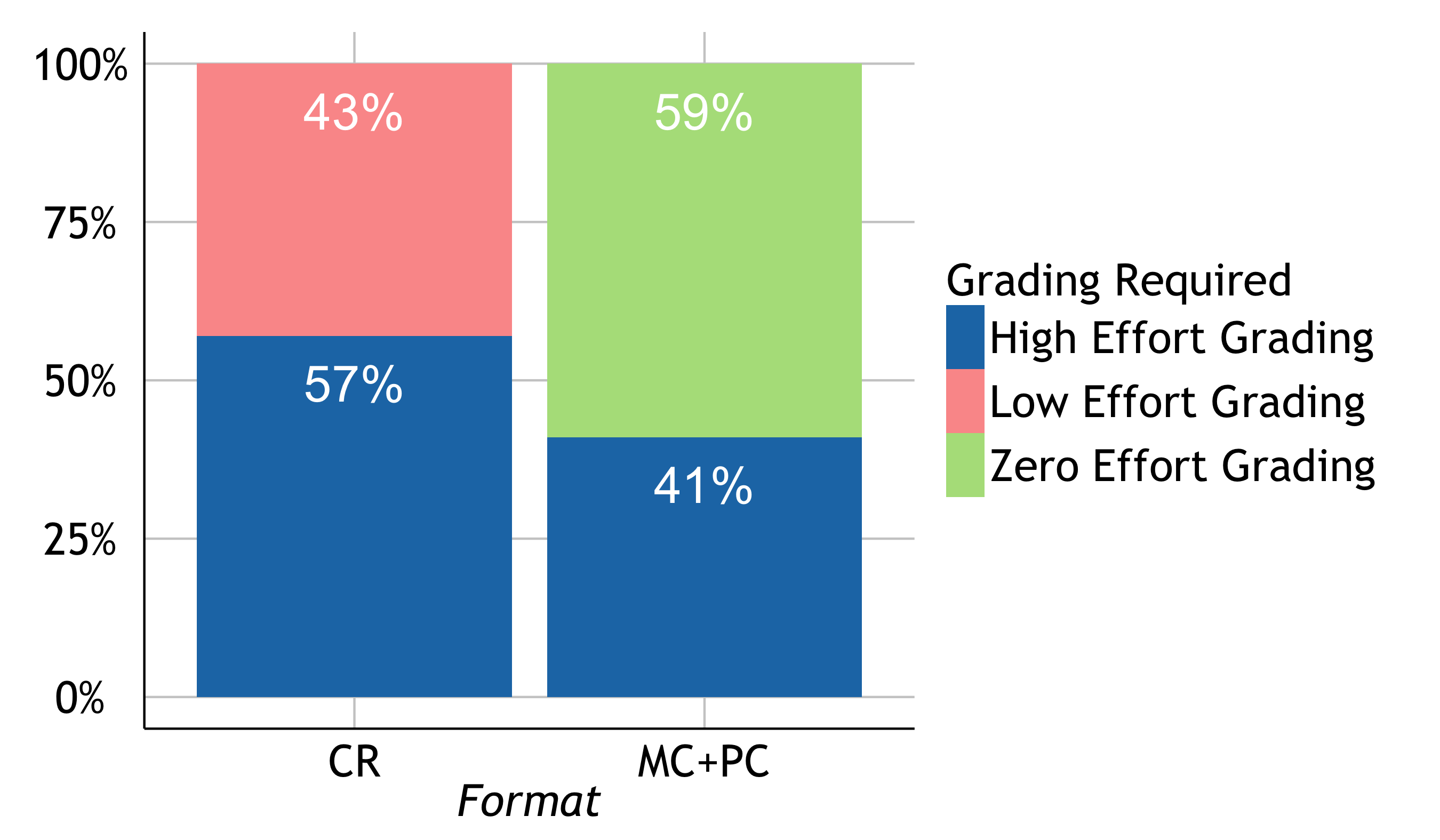Comparison of Final Examination Formats in a Numerical Methods Course
With decreasing budgets for teaching assistants, large class sizes, and increased teaching loads, it is becoming ever more important to effectively utilize resources without sacrificing best practices of assessment. The objective of this study is to evaluate a hybrid multiple-choice final examination with optional partial credit (MC+PC) as a replacement for the same examination in constructed response (CR) or strict multiple-choice (MC) formats. In the hybrid MC+PC format, students were given multiple-choice options and were also allowed to submit constructed responses that would be graded for partial credit.

Figure 1: Effort required for different format examinations – CR (constructed response), MC+PC (multiple choice – optional partial credit). Note: High effort grading is manual grading for incorrectly answered questions, low effort grading is for correctly answered questions, zero effort grading is for correct multiple choice answers.

Figure 2: NSF grantees poster presentation at the 121st Annual Conference & Exposition, June 15 – 18, 2014 (in the picture is the first author – Garrick Aden-Buie)
The three examination formats were utilized once each in three offerings of a Numerical Methods course at the University of South Florida. Multiple linear regression and item analysis of student responses demonstrate that students approach the MC+PC format similar to a CR exam, and the administrative requirements of the test were significantly reduced. This study finds the hybrid MC+PC format to be equally reliable and appropriate for a comprehensive final examination.
Related Journal Paper
Aden-Buie, G., A. Kaw, A. Yalcin, “Comparison of final examination formats in a numerical methods course”, International Journal of Engineering Education, Vol. 31, No. 1(A), pp. 72-82, 2015. (Link to Full Text for Subscribers of Journals)
